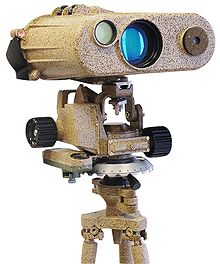And as I promised I will give the evidence of no length contraction.
Study careful the next device.
Laser rangefinder:
I will highlight only the most important parts.
1)
Laser rangefinder,Precision:
Precision
The precision of the instrument is determined by the rise or fall time of the laser pulse and the speed of the receiver. One that uses very sharp laser pulses and has a very fast detector can range an object to within a few millimeters.
Why depends on the speed of the receiver ?
Since the speed of light relative to the receiver is not constant but depends on the speed of the receiver.
2) The difference of speed of light due to different atmospheric conditions (temperature, pressure, humidity) is within the error of precision given by the manufacturer.
If there is length contraction, then the error at different speed of light would be much higher.
Do the calculations yourself.
3) But exactly the same device is used for mapping the ocean floor.(Bathymetric maps) with the device called Bathometer.
Laser-Bathometer:
This devices takes into account only the speed of light in water but not length contraction, and yet works.
Try to convince the manufacturers of these devices to consider the length contraction for their devices.They would not even bother to answer.
For that length contraction is only pseudoscience.


